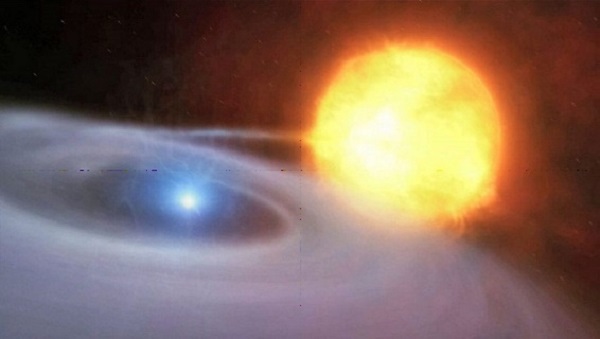New Delhi, (Samajweekly) Scientists are tracking an interesting binary star named RS Ophiuchi (RS Oph), located approximately 5,000 light years away from the Earth that exploded on August 8, 2021 — four years earlier than expected, study of which can give lead to the structure of the Universe.
Researchers have been tracking this star system as its recurrent explosions could give clues to the formation of Type I Supernovae, which has so far remained a mystery. Type I Supernovae is used to measure distances in space, and tracing its formation can help understand the structure of the Universe and its rate of expansion, a release from the Department of Science & Technology said.
Scientists at the S.N. Bose National Centre for Basic Sciences (SNBNCBS), Kolkata, an autonomous research institute under the Department of Science and Technology (DST), who are studying the evolution of the different elements and other parameters of this binary star in the constellation ‘Ophiuchus’ may soon unravel the formation of Type 1.
The RS Oph star system stands out as one of the stars in it is a tiny, compact and super-dense white dwarf (WD), while the other component is a large red giant star. These two stars are orbiting each other, and the white dwarf that orbits close to the red giant is accumulating hydrogen-rich mass from its companion giant star and forming an accretion disc around itself.
The accreted matter gets compressed and heated by the dwarf’s powerful gravity. When the bottom-most layer of this disc reaches a temperature around 10 million degrees Celsius, it ignites the hydrogen fusion reactions in a brilliant thermonuclear flash that blows all the accumulated gas into space at a tremendous speed of a few thousand of kilometres a second. During the explosion, a huge amount of energy (brightness of about 105 Suns) is released, making it visible from a large distance.
“Such explosions in binary star systems are called ‘Novae’, which means new stars. Few of them explode every few tens of years because of the high WD mass (near Chandrasekhar limit of 1.4 solar mass) and high accretion rate. They are known as ‘Recurrent Novae’. RS Oph is one among ten such novaes identified in our galaxy that show multiple explosions in human lifetime,” the release added.
In the past, RS Oph was observed to erupt with an average recurrence period of about 20 years. This happens because the companion star in the RS Oph system is a late-type star which ejects huge amounts of material from its surface and the high mass of the WD (about 1.4 times solar mass).
“Scientists estimated that RS Ophiuchi would explode, giving birth to a Type Ia supernova, when the WD in the RS Oph system exceeds the Chandrasekhar limit. Hence it can help solve the mystery of the progenitor of Type Ia supernovae,” the release said.
The temperature, luminosity, and change in physical and chemical parameters having been studied earlier, the team of scientists at SNBNCBS is now working with international astronomers to probe more about this interesting star, aiming to unravel mysteries about the expansion of the Universe, it added.










